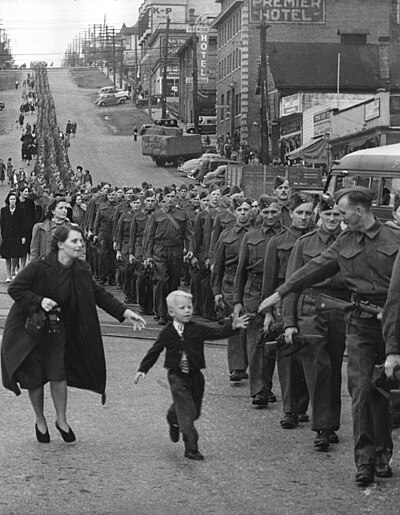User:Invisible pyromanic leprechaun
Appearance
| This user is a member of the Counter-Vandalism Unit. |

|
This user is against Scouting worldwide, and believes it is a form of indoctrination. |
"The CVU, helping fulfil your dreams - for him"
"That's my rock! That's where I saw the leprechaun! He tells me to burn things!" - Ralph Wiggum, The Simpsons
Need I say more?
| This user lives in the United Kingdom. |
| This user supports The Three Lions |
| en-GB -5 | This user can contribute at a professional level of British English. |
| en | This user is a native speaker of the English language. |
| es | Este usuario tiene el español como lengua materna. |
| la-2 | Hic usor media latinitate contribuere potest. |
Wikipedia vandalism information
(abuse log)

Moderate to high level of vandalism
[view • purge • update]
4.27 RPM according to EnterpriseyBot 17:10, 22 November 2024 (UTC)
Wait for Me, Daddy is a photograph taken by Claude P. Dettloff of the British Columbia newspaper The Province. It depicts a column of Canadian Army soldiers of the British Columbia Regiment (Duke of Connaught's Own) marching in New Westminster on October 1, 1940. In the foreground, five-year-old Warren "Whitey" Bernard runs out of his mother's reach towards his father, Private Jack Bernard. The photograph received extensive exposure worldwide, and was used in Canadian war-bond drives.Photograph credit: Claude P. Dettloff; restored by Yann Forget

